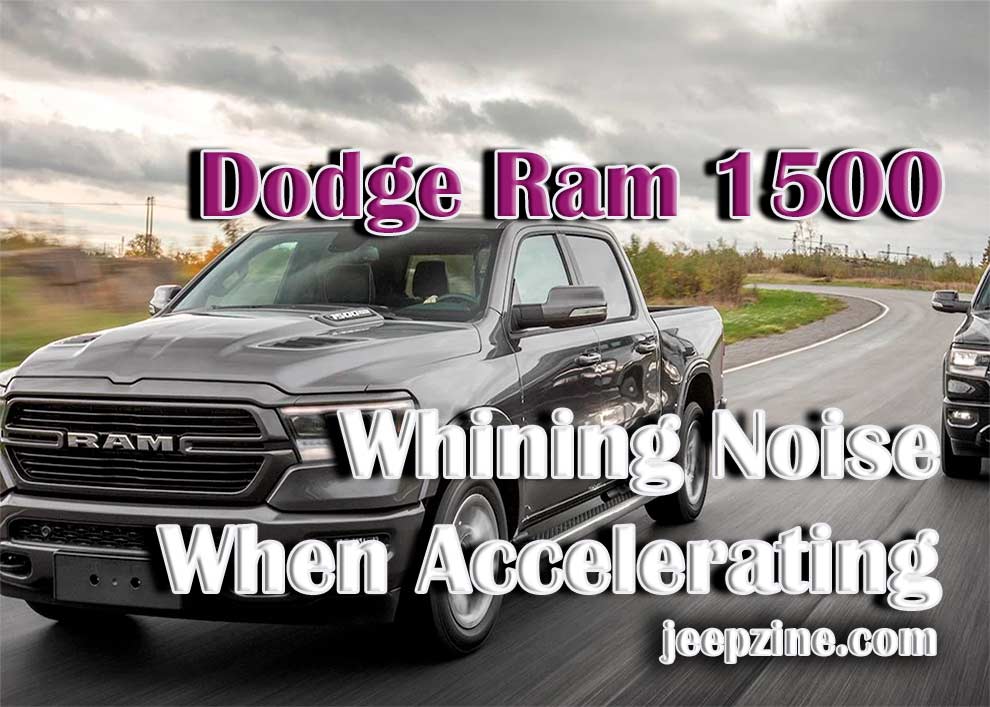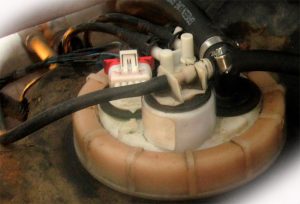The Dodge engineers did a wonderful job with the RAM 1500 truck. It’s the definition of a workhorse: carries heavy loads, overcome challenging roads, and rarely breaks down. It does, however, malfunction now and then, and one of the most annoying issues is when the truck starts to make a whining noise. This happens out of nowhere and doesn’t go away unless you fix it.
But how can a regular driver get rid of it? What are the most common symptoms of squealing noise? Could it be the power steering pump? Or maybe it’s the alternator acting up, causing the truck to make that noise? Well, that’s exactly what we’re here to figure out! The following list includes all the “regular suspects” and possible solutions. Let’s get to it!
#1: A Faulty Alternator
The first thing that I recommend checking when you hear that high-pitched Dodge Ram whining noise when accelerating is the alternator. Essentially, it’s an electric generator that powers up the battery and keeps all the electrical systems in the vehicle up and running. It turns mechanical energy into electrical one. Bad alternator symptoms include dim headlights, a dead battery, issues with starting the car, a malfunctioning radio/stereo, and, of course, a squeaky buzz.
Sometimes, it can be a bit hard to figure out whether it is, indeed, the alternator causing all this trouble, or not. Here’s a little trick: if you hear the whining noise and experience at least one of the other side effects (like weak lights or “dead” electronics), there’s a 90% possibility that you’re dealing with a bad alternator.
#2: Issues with the Pumps
If it’s not the alternator causing all this trouble, I bet it’s one of the pumps. Specifically, the power steering pump is known as a very common cause of the 5.7 Hemi whining noise when accelerating. Upon acceleration, you’ll hear a squealing, shrieking sound. Like any other part, the power steering pump wears out over time. And, since its job is to make sure the fluid reaches the steering system, when it’s got cracks, that fluid starts to leak, causing a major malfunction.
One way to make sure it’s this particular pump’s fault is to put the vehicle in idle mode and turn the wheel. Slowly go from left to right. If you can clearly hear the noise getting louder as you’re turning the steering wheel, you’re definitely on the right track. The water pump is another vital part of the powertrain. Without a proper water pump, the coolant will have a hard time flowing through the cylinders, hoses, and back into the radiator.
In contrast to the steering pump, the water pump makes a deeper sound, almost like a growl. Replacing these pumps will cost you $40-60 each.
#3: A Bad Gearbox
Still can’t get rid of the annoying whining noise? It might be worth checking on the transmission. More specifically, inspect the transmission fluid. So, how can you determine whether the fluid has gone bad or not? Two things: pay extra attention to the color. If it’s brownish, that’s a very strong sign of a clogged fluid. It’s safe to say that when any lubricant/fluid turns brown, that means it’s dirty and in need of replacement.
Black is the worst color and calls for immediate flushing. Next, check it for any traces of metal. Over time, the lube becomes contaminated by tiny metallic parts. In that case, the best thing any driver can do is have the vehicle serviced. There’s very little you can do on your own unless you’re a certified mechanic.
#4: A Malfunctioning Serpentine Belt
Cracking, uneven rib wear, and abrasion are common side effects of a bad serpentine belt. Now, this belt powers up peripherals in the motor, including the air pump, power steering pump, and the alternator, among other parts. So, if you checked all these units and they seem to be fine, the next thing to inspect should be the serpentine belt. When it fails at doing its job, you’ll hear a very distinctive, high-pitched noise.
Usually, it’s especially loud when you crank up the engine. The noise dials down a bit as you move into higher gears, but doesn’t fade away. Sometimes, starting/re-starting the engine might help fix this. If it doesn’t, just go ahead and buy a new belt. These are available for 20-40 US dollars and don’t require much skills/expertise to install.
#5: Lack of Proper Lubing
Last, but not least, let’s talk about the importance of lube. You’ll be surprised by how big of a difference adding some grease can make. Without it, mechanical parts wear out a lot faster due to heavy friction. First of all, check the bearings, the drive shaft, and the rear differential. This gear suffers the most when there isn’t enough lubrication. The good news is – greasing products don’t cost a lot.
You can get a pretty big bottle of decent-quality lube for $15-20, or even cheaper, and it will last you for quite some time. The WD-40 degreasers/lubricants have proven to be effective at eliminating metal-to-metal friction and restoring the proper functions of various car parts. Again, start with the bearings, and go from there. And don’t worry: even if all the parts are in perfect working order, a little bit of extra grease won’t hurt.
Conclusion
Identifying and addressing the 5.7 Hemi whining noise when accelerating can seem daunting, but with the right approach, it’s manageable. Whether it’s a faulty alternator, issues with the pumps, or a bad gearbox contributing to the Dodge Ram making noise when accelerating, understanding the root cause is key to solving the problem efficiently. Regular maintenance and timely replacement of worn-out components like the serpentine belt and ensuring proper lubrication are critical in minimizing these common noises. By staying proactive about your vehicle’s maintenance, you can keep your Dodge Ram running smoothly and quietly, ensuring a pleasant and safe driving experience.



Add Comment